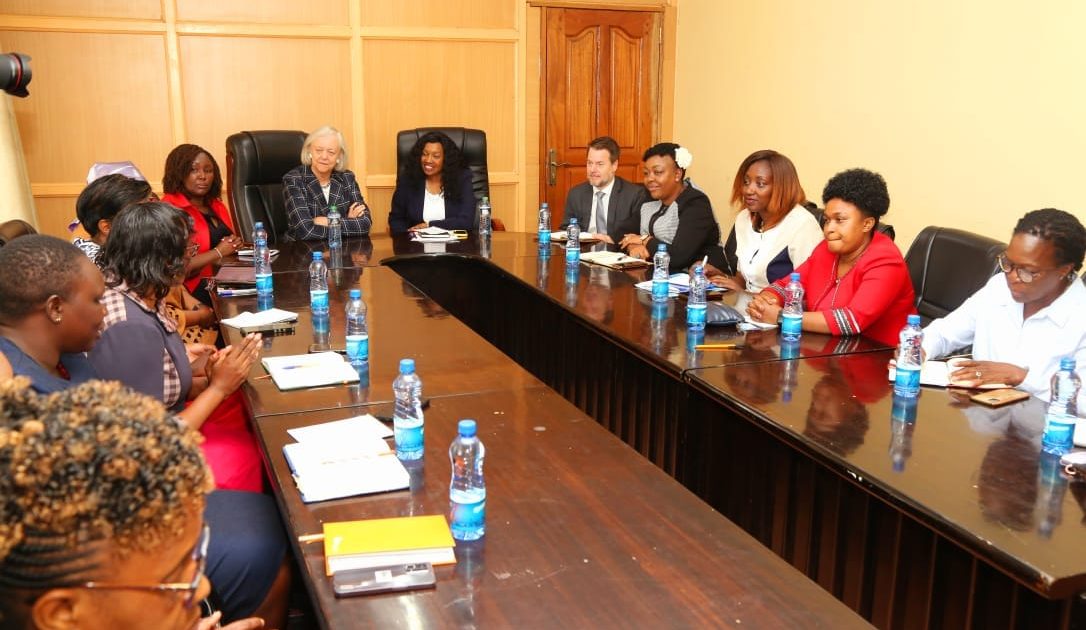Over 40 percent of new HIV infections in Nakuru County are occurring among adolescent girls and young women aged 14-35.
Governor Susan Kihika said despite the significant reduction in new HIV infections in the devolved unit, women and girls continue to bear the brunt of the epidemic as they become infected at a much earlier age as compared to their male counterparts.
Ms Kihika singled out the challenge of teen pregnancies as one of the main contributors to high infection rates among adolescent girls and children.
“Teen pregnant girls face sexual and gender based violence, and high threat to HIV. This is even made worse by stigma, which makes them highly unlikely to adhere to treatment. Due to this, most of them will show up for prenatal care very late, and this exposes the unborn child to HIV if the mother is infected,” she stated.
A report released by the National Syndemic Disease Control Council (NSDC) in November 2022, indicates that nationally 52 per cent of all new HIV infections occurred among adolescents and young adults aged 15-29 years with 26 per cent among 30 to 44 years, infants and children between the ages 0 to 14 contributed to 15 percent of all the new infections with 45 and above contributing to seven per cent infections.
Speaking during talks with a delegation from the United States of America led by the country’s envoy to Kenya Ambassador Ms Margaret “Meg” Whitman, the county boss said her administration had heightened the campaign against HIV/Aids infections to end the menace in the country by 2030 as projected.
The US President’s Emergency Plan for Aids Relief (Pepfar) has been running a programme in the country, whose aim is to diagnose all HIV-positive persons, provide antiretroviral therapy for those diagnosed and achieve viral suppression.
Kihika indicated that the county would invest more on point of care testing to support early identification and treatment.
The Governor added, “We will be working with donors and state agencies to promote civic education. I will be liaising with the County Assembly to make more budgetary allocations to bridge the gap in prevention of new HIV cases and management of existing ones. Right from the beginning, community workers should ensure that all pregnant mothers receive antenatal care.”
She lauded the US Government for being a champion of the fight against HIV/Aids in Kenya.
Kenya has a predominantly young population, with 67 percent aged 29 and below. The data released during the recent World Aids Day indicated that the country had recorded an increase in new HIV/aids infections for the first time in a decade with more than 2,000 cases from 32,025 to 34, 540.
Last year alone, the country recorded 34,540 new HIV/Aids new cases with the report attributing the increase to the constant new infections among children, adolescents and younger people.
Kihika observed that HIV prevention services for children in most health care facilities are only available for children between zero to two years, leaving a gap for those between 2-14 years thus putting the child at risk of HIV infection.
“It is critical to rethink age specific interventions for children aged 2-14 years to avert new HIV infections. Nevertheless, Kenya has made significant investments to ensure adolescents and young people are educated, enjoy a healthy life and attain their aspirations,” she pointed out.
The County boss underscored the need to address the HIV inequalities for children through early identification, and putting them on child-friendly optimal regimens and strengthening social protection mechanisms to improve their outcomes.
She affirmed that Kenya must use a multisectoral approach to reduce the number of new infections among adolescents and young adults.
“This is one of the most complicated cohorts. We need to understand them, talk to them, and come up with a multi-sector intervention from school-based, hospital, and population-specific and community-based to reduce new infections and HIV/Aids-related deaths. It is a journey we must start to win,” the Governor pointed out.
She urged parents and healthcare workers to talk to adolescents using avenues that they can easily relate with instead of shoving directives at them.
According to the National Syndemic Disease Control Council (NSDC) despite the significant reduction in new HIV infection among adolescents and young people, the country did not meet the target of 75 per cent reduction.
The report attributes the increase in new infections to the constant new HIV infections among children, adolescents and younger people, and the shortage of HIV supplies. The report dubbed, ‘it is a race against time’ by the NSDC revealed that of the 34,540 new cases, 70 per cent (20,505) occurred among women and girls.
Kihika further noted Kenya’s new HIV infections are dominant among children and younger adults below the age of 34, while the larger cohort of the people living with HIV is older adults, many of whom might have been infected at a younger age.
The Governor indicated that Kenya has a growing number of older people living with HIV due to improved access to treatment adding that with the survival trends more aged people will live with HIV over time.
“This means that there is a need to place more emphasis on the provision of services to protect the elderly from age-related conditions that may worsen the quality of life,” she stated.
She said that early HIV diagnosis and treatment for children significantly reduce morbidity and mortality rates.
By Jane Ngugi and Charloth Chepkemoi





